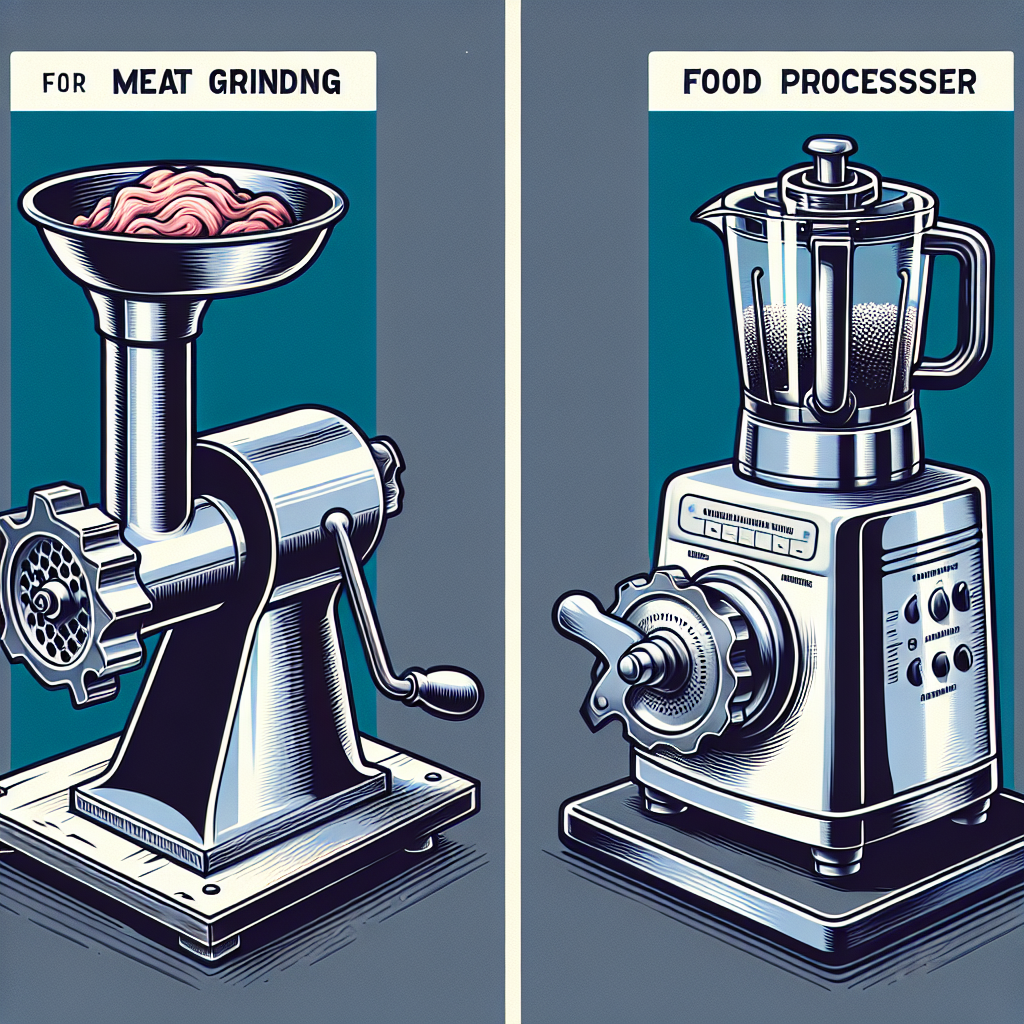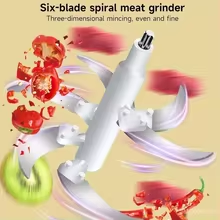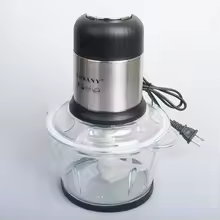
In today’s modern kitchens, efficiency and precision play a crucial role in making meal preparation quicker and more enjoyable. Two appliances that often get compared are the meat grinder and the food processor. While both offer impressive capabilities, each one is designed for different culinary tasks. If you’re unsure which one suits your needs best, this guide will help you make an informed decision.
Understanding the Basics: What Is a Meat Grinder?

A meat grinder is a specialized kitchen appliance designed to finely grind or mince meat for cooking. It can be either manual or electric and typically consists of several key components: a hopper, auger, cutting blades, and grinding plates. You feed meat into the hopper, and the grinder processes it into your desired consistency.
Key Functions of a Meat Grinder:
- Grinding beef, chicken, pork, or fish
- Making sausages with specific attachments
- Creating custom blends for burgers, meatballs, or meatloaf
Why it matters: If you care about the quality, hygiene, and customization of your ground meat, owning a meat grinder can be a real game-changer.
What Is a Food Processor and What Can It Do?

A food processor is a versatile kitchen appliance equipped with interchangeable blades and discs, allowing it to handle a wide range of food preparation tasks. Unlike a meat grinder, it’s built to multitask efficiently.
Key Functions of a Food Processor:
- Chopping vegetables quickly and uniformly
- Making sauces, dips, and salad dressings
- Kneading dough for bread, cookies, or pizza
- Shredding cheese, cabbage, or root vegetables
Why it matters: For anyone who loves speed and convenience in the kitchen, a food processor significantly cuts down prep time.
Meat Grinder vs Food Processor: Key Differences
Here’s a side-by-side comparison to help you see the clear distinctions:
| Feature | Meat Grinder | Food Processor |
|---|---|---|
| Primary Use | Grinding meat | Multi-purpose prep |
| Texture Output | Fine and consistent | Variable, sometimes mushy for meat |
| Customization | High control over blend and fat content | Limited customization |
| Attachments | Sausage stuffer, grinding plates | Slicing disc, shredding blade, dough blade |
| Price Range | $50 – $300+ | $30 – $400 |
| Cleaning | More complex, usually hand-wash | Easier, often dishwasher-safe |
When Should You Use a Meat Grinder?

Choose a meat grinder if:
- You cook ground meat regularly
- You value hygiene and want control over meat quality
- You enjoy experimenting with different meat textures
- You plan to make sausages or kebabs at home
Expert tip: Grinding your own meat not only boosts flavor but also significantly reduces the risk of contamination, unlike most store-bought ground meat which may include additives or filler cuts.
When Should You Use a Food Processor?

Opt for a food processor when:
- You frequently prep large batches of vegetables
- You want to make purees, soups, or sauces quickly
- You bake regularly and need to knead dough
- You want one appliance to handle multiple kitchen tasks
Pro tip: For slicing and dicing, the food processor is unbeatable — saving you a lot of manual effort and time.
Can You Grind Meat with a Food Processor?
Yes, but with certain limitations.
Although a food processor can be used to grind meat, it doesn’t provide the same texture as a dedicated meat grinder. Instead of grinding, the sharp blades tend to chop or shred, which can result in a mushier texture — not ideal for meatballs or burgers.
How to Get Better Results with a Food Processor:
- Partially freeze the meat before processing
- Cut the meat into small chunks
- Pulse in short bursts instead of blending continuously
- Remove sinew or tough tissues beforehand
While it can work in a pinch, a meat grinder delivers superior consistency for meat-based recipes.
Performance and Versatility
Meat Grinder Performance:
- Produces consistent, high-quality ground meat
- Can handle tougher cuts of meat with ease
- Works well for grinding certain vegetables or fruits (with attachments)
Food Processor Versatility:
- Perfect for a wide range of food prep tasks
- Ideal for baking, pureeing, and chopping
- More flexible with multiple blade options
Verdict: Choose a meat grinder if your cooking revolves around meats. Go for a food processor if you’re looking for a well-rounded kitchen helper.
Ease of Use and Maintenance
Meat Grinder:
- Requires more setup and disassembly
- Manual models need physical effort
- Most parts need to be washed by hand
Food Processor:
- Easy to assemble and operate
- Many parts are dishwasher-safe
- Compact and easier to store
Tip: If you’ll be using the appliance frequently, ease of cleaning and storage should play a big role in your decision.
Cost Comparison: Which One Is More Budget-Friendly?
- Meat grinders generally range between $50 and $300+, based on motor power, materials, and features.
- Food processors are available from $30 up to $400, depending on capacity, brand, and attachments.
If you’re on a budget and want a multi-functional tool, the food processor is a solid investment. However, if you’re serious about meat prep, the value of a meat grinder pays off over time.
Which Appliance Saves More Time?
- For large meat batches, a meat grinder is more efficient and produces better quality.
- For daily kitchen tasks, a food processor speeds up everything from chopping onions to kneading dough.
Efficiency depends on your kitchen routine. Are you preparing meat-heavy meals or focusing on general food prep?
What Do Chefs Recommend?
Professional chefs typically choose a meat grinder when meat quality and texture matter most — such as in gourmet burgers or sausages. On the other hand, food processors are widely used in commercial kitchens for chopping vegetables, mixing ingredients, and preparing sauces in bulk.
Bottom line: Most kitchens benefit from having both tools, as they serve complementary purposes.
Conclusion: Which One Should You Choose Meat Grinder vs Food Processor
Choosing between a meat grinder and a food processor ultimately depends on your personal cooking style, budget, and kitchen space.
- Pick a meat grinder if you focus on preparing custom ground meats, sausages, or kebabs and care deeply about texture and quality.
- Choose a food processor if you need a versatile appliance that can tackle a variety of everyday kitchen tasks.
If possible, consider owning both. They each shine in their own domain and can make your kitchen far more efficient and enjoyable.


